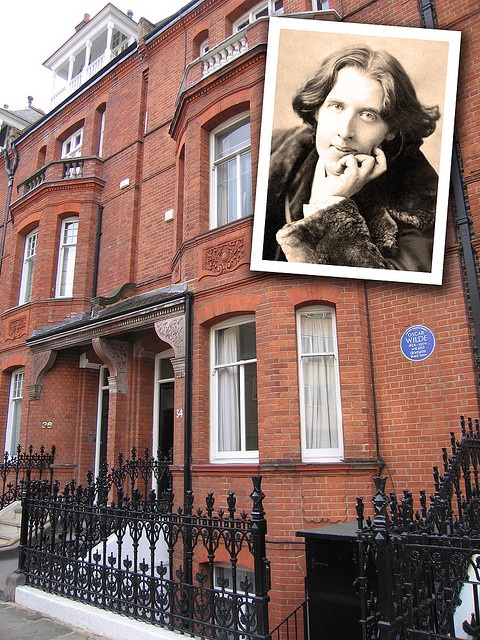Idioma inglés
Idioma inglés
Traducción.- Palabra o frase nº14
‘GANAR’ verbo.1 (un premio,concurso) to win.Ganó el premio a la mejor actriz,she won the award for best actress;¿Quién ganó el torneo?,who won the tournament?
ESPAÑOL INGLÉS
Pronombres personales
Los pronombres personales en inglés son:
| Español | Nominativo1 | Objetivo | Reflexivo | Genitivo (atributivo) | Genitivo (predicativo) |
|---|---|---|---|---|---|
| yo | I | me | myself | my | mine |
| tú, usted | you | you | yourself | your | yours |
| él | he | him | himself | his | his |
| ella | she | her | herself | her | hers |
| ello2 o eso/a | it | it | itself | its | —-3 |
| nosotros | we | us | ourselves | our | ours |
| vosotros, ustedes | you4 | you | yourselves | your | yours |
| ellos, ellas5 | they | them | themselves | their | theirs |
Notas:
- Al contrario que en español, en inglés casi siempre preceden al verbo. Ejemplo: She is blonde («[Ella] es rubia»). Sin embargo, sobre todo coloquialmente, hay ocasiones en las que se prescinde del pronombre para preguntas y respuestas (elipsis)18 : (Have you) Finished? – («(¿Has) Terminado?») o How are you? – (I’m) Fine. thanks. («¿Cómo estás? – (Estoy) Bien, gracias.»)
- Se refiere a objetos.
- No se usa.
- En ocasiones se emplea you all («todos vosotros», «todos ustedes») o alguna variante para distinguirlo del you en singular.
- A veces se emplea con valor singular cuando no se desea revelar el sexo del sujeto. Por ejemplo, If a customer requires help, they should contact… («Si un cliente requiere de asistencia, deberá contactar…»).
Conjugación del tiempo presente
En el present simple, el verbo sigue en infinitivo, pero se elimina la palabra to en las formas I, you, we y they.
Ejemplo:
- I: I eat
- You: You eat
- We: We eat
- They: They eat
Sin embargo, en las formas it, he y she, se le añade una -s al verbo (sin to).
Ejemplo:
- He: He stops (Él para).
- She: She stops (Ella para).
Si el verbo termina en -y se elimina la y y se añade -ies; por ejemplo, He carries his suitcase. («Él lleva su maleta.») (Ver reglas de pluralización). Casi siempre es necesario escribir o decir un sujeto en cada oración, aún cuando la frase que no requiere un sujeto en español; por ejemplo, en español es aceptable decir «Es la una de la tarde» para indicar la hora de la una, pero en inglés es normalmente necesario usar el pronombre it al frente de la frase: It is one (o’clock). Aunque para contestar a la pregunta What time is it? (¿Qué hora es?), se puede contestar simplemente one, en lugar de It’s one.
Casi todos verbos son regulares en el presente; los excepciones notables son to be («ser» y «estar») → I am, you/we are, he/she is; to have («tener» y «haber» en tiempos perfectos) → I/we/they have, he/she has; y to do («hacer») → I/you/we/they do, he/she does. En el pasado, un verbo es regular si su pasado simple y de participio terminan en -ed. Por ejemplo: arrive («llegar») → arrived («llegó, llegado»). Con la excepción del verbo to be cada verbo usa la misma conjugación para cada forma en el pasado.
- Un verbo es irregular si su pasado simple y/o de participio no termina en -ed. Por ejemplo: write («escribir») → wrote («escribió», en pasado simple), written («escrito», en pasado de participio). Los verbos irregulares ingleses más importantes son (infinitivo → pasado simple → pasado participio) to be → I/he/she was, we/they/you were → been; to do → did → done; to eat → ate → eaten («comer»); to give → gave → given («dar»); to go → went → gone («ir»); to have → had → had («haber/tener»); to make → made → made («hacer, fabricar»); to speak → spoke → spoken («hablar»); to spend → spent → spent («gastar»).
Para formar un verbo en futuro se le añade la palabra will antes del infinitivo del verbo (sin to). Por ejemplo: You will eat spaghetti. («Comerás espaguetis»). Para formar el condicional se le añade la palabra would antes del infinitivo del verbo (sin to): You would eat spaghetti. («Comerías espaguetis»).
El tiempo progresivo del inglés, en el presente y el pasado, usa el verbo to be seguido del gerundio del verbo principal: I am thinking («Estoy pensando»); You are winning («Estás ganando»); We were talking about baseball («Estábamos hablando del béisbol» o «Hablábamos del béisbol»). Nótese que el imperfecto en español se traduce al pasado progresivo en inglés cuando indica una acción en progreso en el pasado.
El tiempo perfecto del inglés usa el verbo to have seguido del participio del verbo principal. Por ejemplo, I have done the work («Yo he hecho el trabajo»), They had seen the movie («Habían visto la película»).
Para escribir un verbo en el negativo en un tiempo simple, se usa una forma del verbo to do seguido de la palabra «not» y el infinitivo del verbo principal (sin to); por ejemplo: We do not have any money («No tenemos ningún dinero»), She does not dance («Ella no baila»). En el pasado se usa did not en todas formas: He did not write the essay («Él no escribió el ensayo»), You did not finish your homework («No terminaste tu tarea»). Nótese que el tiempo del verbo to do indica el tiempo de la frase; el verbo principal siempre está en la forma infinitivo, a pesar del tiempo de la frase.
El negativo de tiempos compuestos también usa la palabra not, pero estos tiempos mantienen la forma del verbo auxiliar original; se pone la palabra not detrás del verbo auxiliar. Por ejemplo, I am not running («Yo no estoy corriendo»); They had not made the clothes («No habían hecho la ropa»). La palabra not también puede ser contraído a n’t y añadido al fin del verbo auxiliar (como don’t, hadn’t, isn’t, weren’t, etc.; no puede hacer esto con I am not, que se contrae a I’m not.)
En preguntas con la forma del verbo auxiliar do, el orden es do + sujeto + infinitivo del verbo principal sin to (+ sustantivo u otra palabra). Además sólo se escribe un signo de interrogación al final de la pregunta. Este orden ocurre en las interrogaciones simples. Por ejemplo: Does she draw? («¿Dibuja ella?»), Do you understand me? («¿Me entiendes?») Did you have a question? («¿Tenías una pregunta?»). Cuando la pregunta usa el auxiliar be, no se utiliza el auxiliar do. Por ejemplo: Is she happy? («¿Está ella feliz?»). Otras oraciones más compuestas utilizan adverbios interrogativos (cuánto, cómo, dónde…) al principio de la pregunta. Los adverbios más importantes son who (quién), what (qué), where (dónde), when (cuándo), why (por qué) y how (cómo). Cuando se usan estos adverbios, se utiliza el verbo auxiliar, por ejemplo do, después del adverbio. Por ejemplo: When did he buy the car? («Cuándo compró el coche?»).
Para responder a una pregunta simple (sin adverbio interrogativo), se usa yes («sí») o no («no») seguido de una coma y la forma apropiada del verbo auxiliar, acompañada del pronombre personal. En el negativo también se añade la palabra not después del verbo auxiliar en la respuesta. Por ejemplo: Do they go to school? Yes, they do. («¿Van a la escuela? Sí.»), Is she eating? No, she is not (isn’t) [eating]. («¿Está ella comiendo? No, no está comiendo.»).
TEMA EN INGLÉS:
Personal pronouns
Personal pronouns in English are:
| Spanish | Nominating one | Target | Reflexive | Genitive (attributive) | Genitive (predicative) |
|---|---|---|---|---|---|
| I | I | me | myself | my | mine |
| you, you | you | you | yourself | your | yours |
| it | I | him | himself | his | his |
| it | she | her | herself | her | hers |
| 2 to do that / a | it | it | itself | its | —- 3 |
| us | we | us | ourselves | our | ours |
| you, you | you 4 | you | yourselves | your | yours |
| them, including 5 | They | them | Themselves | Their | theirs |
Notes:
- Unlike in Spanish, in English almost always precede the verb. Example: She is blonde («[She] is blonde»). However, especially colloquially, there are occasions in which the pronoun is omitted for questions and answers ( ellipsis ) : (Have you) Finished – (‘(Been) Finished? «) or How are you -? (I’m) Fine. thanks (‘How are you – (I’m) Fine, thank you. «).
- Refers to objects.
- Not used.
- Sometimes all you («you all», «you all») or some variant to distinguish it from you is used in the singular.
- Sometimes used with singular value when you want not to reveal the sex of the subject. For example, If a customer requires help, They Should contact … («If a customer requires assistance, you should contact …»).
Present tense conjugation
In the present simple , the verb is in the infinitive, but the word to be deleted in forms I, you, we and they.
Example:
- I: I eat
- You: You eat
- We: We eat
- They: They eat
However, in the forms it, he and she, he adds-s to the verb (without to).
Example:
- HE: I stop s (Him).
- She: She s stop (She stops).
If the verb ends in-y is eliminated and and add-ies, for example, He carries his suitcase («He carries his suitcase.») (See pluralization rules).. It is almost always necessary to write or say a subject in each sentence, even if the sentence requires a subject in Spanish, for example, in Spanish is acceptable to say «It’s one in the afternoon,» to indicate the hour of one, but English is usually necessary to use the pronoun it in front of the phrase: It is one (o’clock). Although to answer the question What time is it? (What time is it?), You can answer just one, instead of It’s one.
Almost all verbs are regular in the present, the notable exceptions are to be («ser» and «estar») → I am, you / we are, he / she is, to have («have» and «have» in times perfect) → I / we / they have, he / she has,., and to do («do») → I / you / we / they do, he / she does in the past, a verb is regular if its simple past and participle end in-ed eg. arrive («get») → arrived («come, come»). With the exception of the verb to be used each verb conjugation the same for each form in the past.
- A verb is irregular if its simple and / or past participle do not end in-ed eg. Write («write») → wrote («wrote» in simple past), written («writing» in past participle ). The most important are English irregular verbs (infinitive → Simple → past participle past) to be → I / he / she was, we / they / you were → Been; did to do → → done, to eat → → eaten ate (» Spot «) gave to give → → Given (» give «) went to go → → gone (» go «), To Have → had → had (» have / have «); made to make → → made (» do, make «) to speak → → spoke spoken (» talk «), to spend → → spent spent (» spend «).
To form a verb in the future you will add the word before the verb infinitive (without to). For example: You will eat spaghetti («You will eat spaghetti.»). To form the conditional you would add the word before the verb infinitive (without to): You would eat spaghetti («would you eat spaghetti.»).
The English progressive tense, the present and the past, used the verb to be followed by the gerund of the main verb: I am thinking («I’m thinking»); You are winning («You win») We were talking baseball acerca («We were talking baseball» or «talked baseball»). Note that the imperfect in Spanish translates to English past progressive indicates when an action in progress in the past.
The perfect tense of the English uses the verb to have followed the participle of the main verb. For example, I have done the work («I’ve done the work»), They had seen the movie («They had seen the movie»).
To write a verb in the negative in a simpler time, a form of the verb to do followed by the word «not» and the infinitive of the main verb (without to) used, for example: We do not have any money («No We have no money «), She does not dance (» She does not dance «). In the past did not used anyway: I did not write the essay («He wrote the essay»), You did not finish your homework («You did not finish your homework»). Note that the time to do the verb indicates the time of the sentence, the main verb is always in the infinitive form, despite the time of the sentence.
The negative compound tenses also uses the word not, but this time keep the shape of the original auxiliary verb and the word not after the auxiliary verb is placed. For example, I am not running («I’m not running»); They had not made the clothes («had not done the laundry»). The word also can not be contracted to n’t and added to the end of the auxiliary verb (as do, Had not, is not, weren, etc.. Could not do this I am not, that is I’m not contracted.)
In the form of questions do auxiliary verb, the order is do + subject + main verb infinitive without to (+ noun or another word). Also just a question mark at the end of the question is written. This occurs by simple questions. For example: Does she draw («? Her Draw») Do you understand me («Do you understand me?») Did you have a question («Did you have a question?»)?. When the question be used by the proxy, the auxiliary do is not used. For example: Is she happy («Is she happy?»)?. Other more complex sentences using interrogative adverbs (how, how, where …) at the beginning of the question. The most important adverbs are who (whom), what (what), where (where), when (when), why (why) and how (how). When these adverbs are used, the auxiliary verb is used, for example do after the adverb. For example: When did I buy the car («When you purchased the car?»)?.
To answer a simple question (no interrogative adverb), used yes («yes») or not («no») followed by a comma and the appropriate form of the auxiliary verb, together with the personal pronoun. On the negative word not is also added after the auxiliary verb in the answer. For example: Do they go to school? Yes, they do. («Are you going to school? Yeah») Is she eating? No, she is not (is not) [eating]. («Is she eating? No, you are not eating.»).
FUENTE QUE UTILIZO: http://es.wikipedia.org














